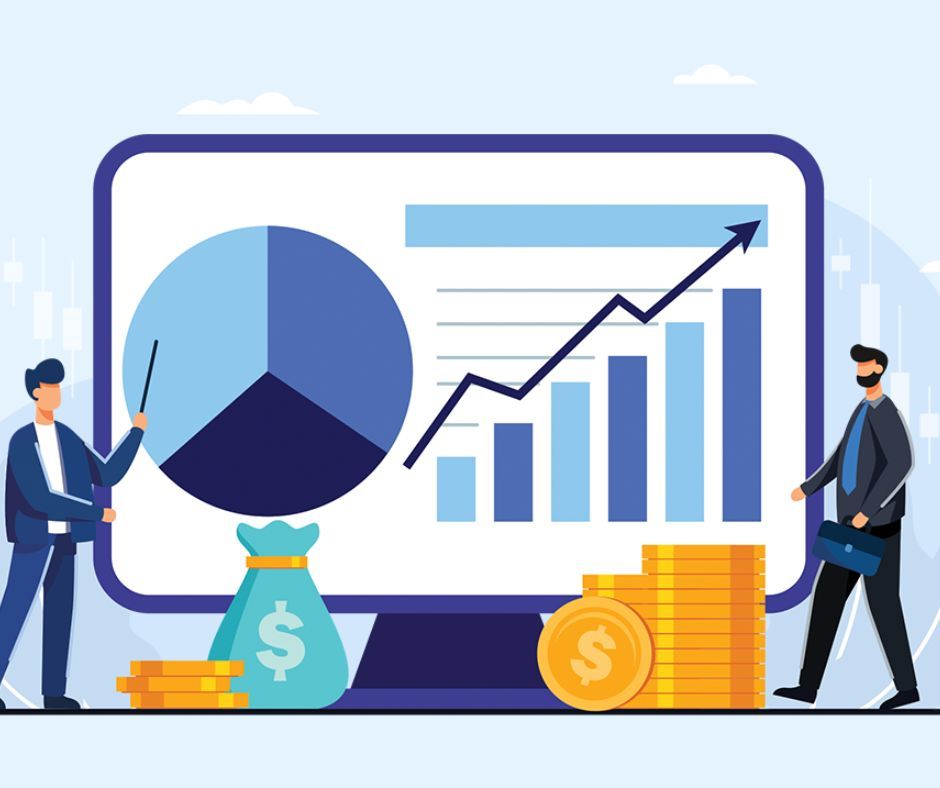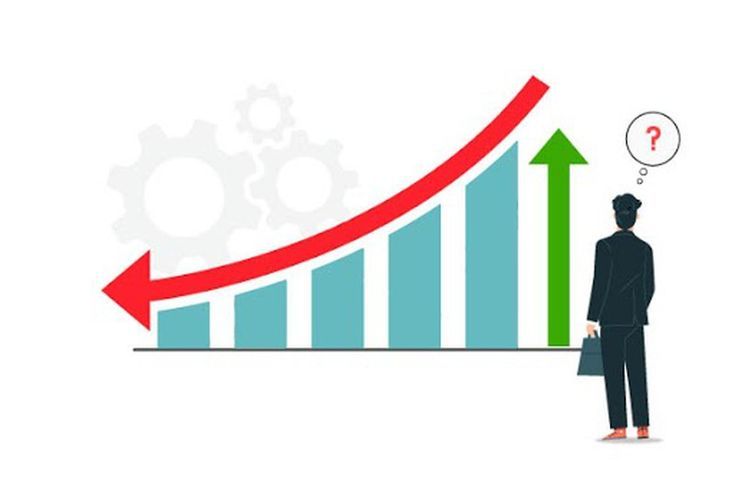You don’t have to be a chartered accountant to understand the benefits that key financial indicators can bring to your business. As a business owner, you should at least have a cursory knowledge of how your balance sheets, accounting practices and financial performance affect the bottom line of your enterprise.
Here’s a quick guide to the 9 most important financial key performance indicators (KPIs) for you to use in your business metrics.
1. Profit
First things first – do you know how to calculate profit? If you don’t, listen up! It’s one of the most important financial key performance indicators you should keep track of for your business.
Luckily, it’s not that difficult. There are two levels of profit that gives you different insights about your business.
Gross profit = sales revenue − the cost of sales
Your sales revenue is the amount of money you get from making sales.
Your cost of sales is any expense directly related to the cost of making your goods or delivering your services. It’s known as a variable cost because these costs will depend on the number of items you’re selling.
Net profit = gross profit – other operating expenses and interest
Net profit differs from gross profit because it includes the non-variable costs of operating your business, known as your fixed costs. These are things like rent, debt payments, utility bills and staff wages. These costs are also commonly referred to as overheads.

Let’s use a self-employed contractor as an example. To calculate your gross profit all you have to do is add up all your sales (such as contracts and other services) and subtract your business costs for making those sales (such as subscription services or travel).
Then, to find your net profit, you subtract your fixed costs on top of that. For instance, if you pay rent for an office space or have to pay outsourced staff, then those get subtracted before finding your real “net” profit of operating your business.
Your net profit is the easiest way to tell if your business is sustainable. But don’t be fooled into thinking it’s the only indicator you need to measure.
2. Gross Profit Margin
There are more enlightening ways to express your business profit. One way is with the gross profit margin.
This term expresses your profit in relation to your sales revenue.
Gross profit margin (%) = (Gross profit / Sales revenue) x 100
This calculation will give you a neat way to express how much value your business is adding during your operations. For instance, even if your sales revenue doubled in the past year, have you looked at your margins? If your gross profit margin drops from 30 per cent to 20 per cent while your sales revenue doubled, it could be an indication that you could do things more efficiently. It might tell you whether your products or services are priced appropriately or whether you can lower your input costs to boost profit.

Be sure to check your gross profit margin over time and also compare your financial key performance indicators to the industry average.
3. Net Profit Margin
Your net profit margin is similar to the previous indicator, except it takes into account your overhead costs. It’s the relative amount of sales revenue that’s left over after you pay your full costs.
Net profit margin (%) = (Net profit / Sales revenue) x 100
It’s the simplest way to express how much profit you take home for every euro (€) earned in sales. If you make €80,000 in sales this year and your net profit is €45,000, then congratulations – your net profit margin is 56 per cent. That’s pretty good!
Try comparing your net profit margin with your gross profit margin. That kind of analysis can tell you the impact of your fixed costs on your business operation.
4. Solvency
Do you know if your business is solvent?
The term has a negative connotation to it, but that’s only because it typically goes unchecked until it’s too late.

In reality, it’s an excellent financial key performance indicator that you should be monitoring for your business. Your solvency can be calculated with the following ratio:
Current Ratio (solvency ratio) = current assets / current liabilities
Let’s break these terms down:
Your current assets are all the resources you have available to convert to cash within one year. That can include the cash in your account or your existing inventory.
Your current liabilities are the financial obligations that you owe within the current year. If you commit a future outflow of cash, then you have a liability. Common business liabilities are leases, loan repayments and payments owed to suppliers.
What does this tell us? It’s essential to monitor your company’s ability to meet its financial obligations. If your business has a positive (greater than 1:1) current ratio, then it’s considered solvent. If so, you can pay off your debts over the long term.
Your solvency ratio is an essential financial key performance indicator of your business maturity and sustainability that you simply can’t ignore!
5. Working Capital
Your working capital calculation is similar to solvency because it uses assets and liabilities to depict the health of your balance sheet. The only difference is that instead of creating a ratio, it’s the difference between them:

Working capital = Current assets – current liabilities
It’s a very similar way to calculate the inflow and outflow of cash that results directly from your day-to-day operations. If your working capital is negative, then that tells you that you run a deficit to operate your business, at least during the given period. That could be troubling, and it might happen if you have to rely on debt to last you through to your next sales.
Keep an eye on your working capital calculation and try to keep it positive by relying on fewer (or faster) inventory stocks or trying to get customers to pay up sooner rather than later.
6. Liquidity Ratio (quick ratio)
While solvency is your company’s ability to meet long-term obligations, your liquidity ratio can tell you about your ability to meet debts and obligations in the short-term.
Your liquidity is how fast you can convert your assets to cash. To illustrate using an extreme example – if you have a warehouse of product inventory and the bank knocking at your door, how fast can you sell your stock to pay off your debts?

In reality, solvency and liquidity are often confused or used interchangeably. However, the most crucial difference is in knowing how “liquid” your assets are. There’s a handy financial key performance indicator you can use to calculate whether you can meet your short-term financial obligations:
Quick Ratio = (Cash and Cash Equivalents + Marketable Securities + Accounts Receivable)/(Current Liabilities)
6. Debt to Equity Ratio
The debt to equity ratio is another financial key performance indicator to determine your company’s ability to repay financial obligations.
Sure, borrowing cash is great because it lets you launch your business and can give you the flexibility to invest in growth. However, it can be an overwhelming presence if you let debt take over your financial statements.

Are you looking for a way to figure out how much of your business assets are financed through debt? That’s where the debt to equity ratio (or D/E ratio) comes in.
D/E ratio = Total debt / Total equity
How does it work? Well, a D/E ratio of 1.0 means that your company has an equal balance of debt compared to equity.
As an example, to find your total debt, you’d add up all the loans you’ve taken on such as a mortgage for office or warehouse space (-€240,000).
The total equity you have in your business is what actually belongs to you, (as opposed to the banks or creditors). Let’s say after a great year in sales you put down a nice €120,000 toward the principal on your mortgage.
Therefore, your D/E ratio = €240,000 / €120,000
That’s a ratio of 2.0, which tells you that for every €1 you have in equity, you still also owe €2. That’s not a great place to be, but it’s not uncommon for startup businesses.
7. Net Cash Flow
In some way, you probably track the inflows and outflows of cash in a given period, whether monthly or quarterly.
The difference in how much cash you take in and how much you send out is your net cash flow. More specifically, it arises from considering three cash-related factors.
Net cash flow = cash flow from operations + cash flow from investing + cash flow from financing
On your cash flow statement, you’ll likely have several categories for how much cash you have on hand. To illustrate, we’ll look at a simple manufacturing example for month-to-month cash flow:

Operating activities (you sell some products to other vendors): +€10,000
Investing activities (you purchase more machinery and have to repair some old equipment) -€3,250
Financing activities (you repay some of your loans) -€1,250
The sum of these cash activities is, therefore, €5,500. That’s cash that you have leftover at the end of the month. You can rollover those liquid assets into the next month to pay for investments or simply keep it available for a “rainy day”. Avoiding business cash flow problems is essential for any business.
9. Sales Growth
Your sales growth is the percentage increase in sales over a given time period. It’s a very important financial key performance indicator to monitor closely for any business. It’s common for businesses to calculate it monthly and annually to figure out whether the demand for products or services is increasing or decreasing. in certain industries sales are seasonal, if that’s relevant for your business it can be useful to compare sales to the same period last year.

Sales growth = [ (Net sales for the current period – net sales for the prior period) / net sales for the prior period ] x 100
Let’s say you want to figure out your sales growth between 2018 and 2019.
In 2018 you sold €120,000 worth of services. In 2019, that figure was €131,000.
Sales growth = [(€131,000 – €120,000) / €120,000 ] x 100
Once you run the numbers, you’ll see that your sales grew by 9.2 per cent!
Wrap up
That’s all for now! We hope you enjoyed reading about these 9 essential financial key performance indicators (KPIs) that you can use to monitor the financial wellbeing of your small business.

Using them will improve your own financial literacy and help inform your decision-making to operate and improve your business. If you want to learn more about managing your business check out our related blogs:











